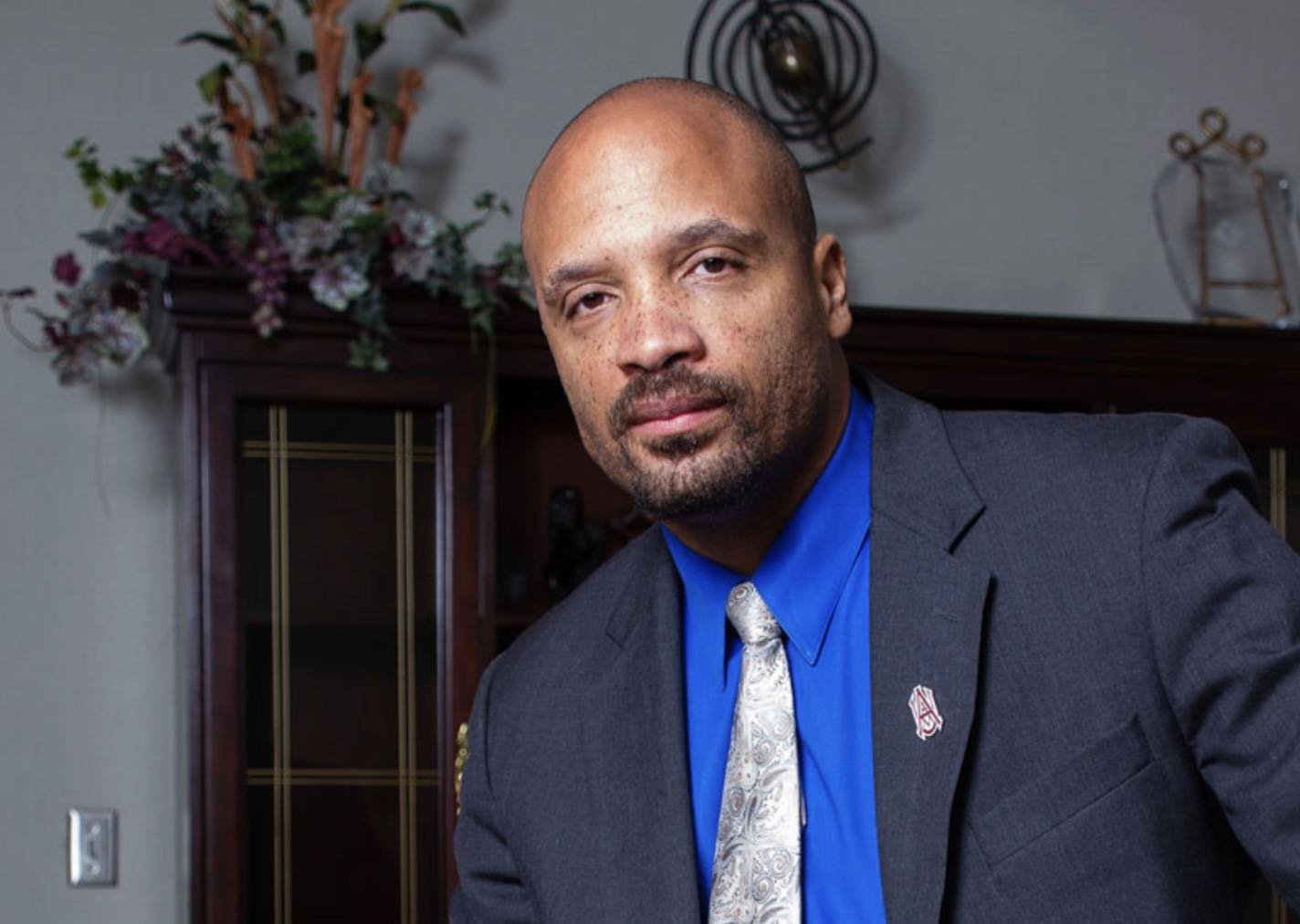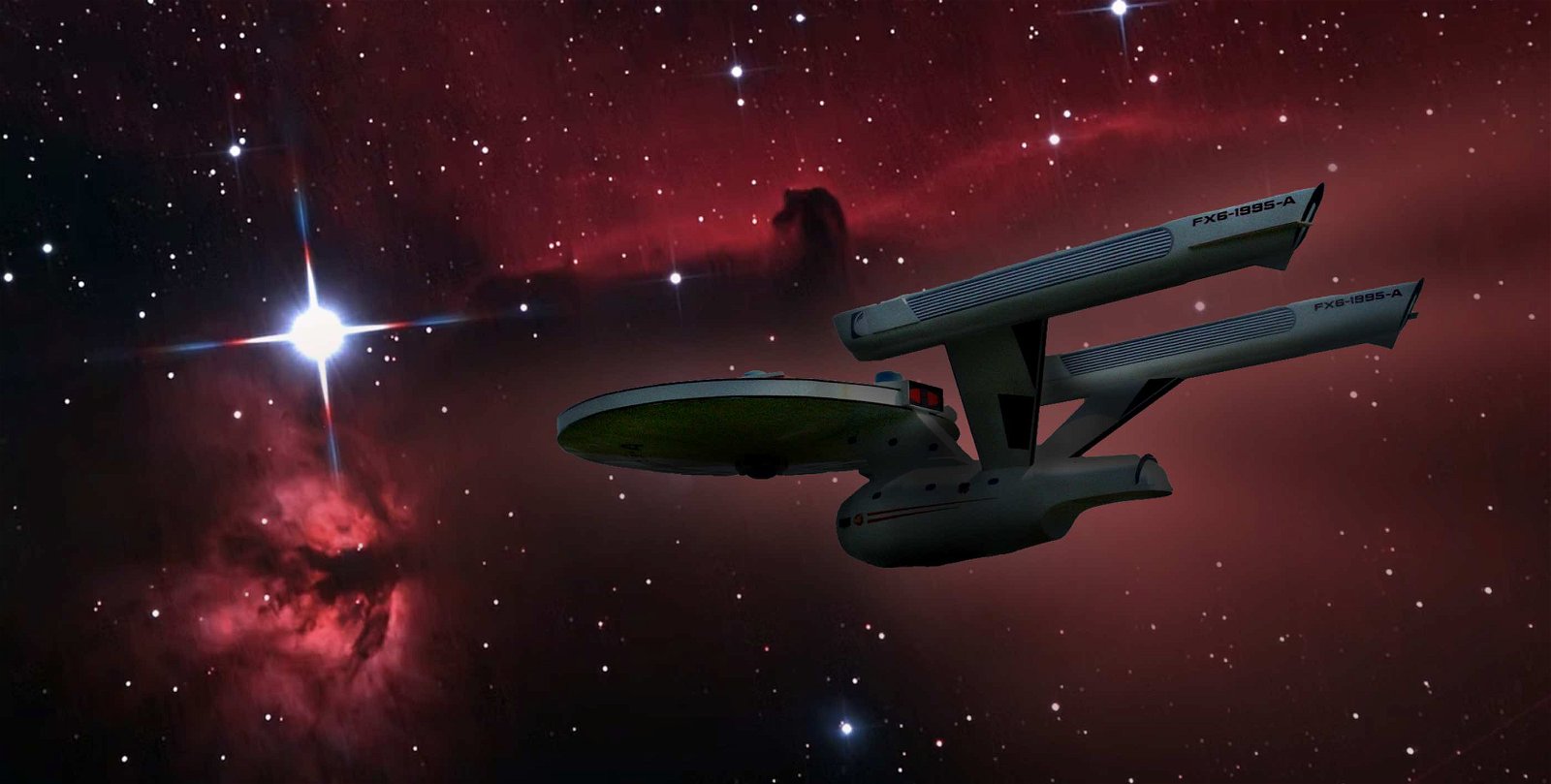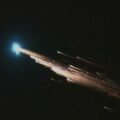Warp drive propulsion, the hypothetical means by which advanced spacecraft of the future may one day explore the universe by way of superluminal travel, has its origins as a concept in science fiction. Best known for its appearances in the famed 1960s TV series Star Trek, it wasn’t until 1994, when a Mexican mathematician named Miguel Alcubierre laid out the mathematics of warp theory, that some scientists–and at least one engineer–began to take the concept seriously.
Since then, a handful of experts have tried to improve on those theories, including former NASA engineer Dr. Harold G “Sonny” White. Until now, all of those ideas have remained mathematical theories that are particularly difficult–if not impossible–to construct with today’s technology.
More recently, an international think-tank of over 30 physicists called Applied Physics has inched closer to a working concept by laying out the math behind what they call a physical warp drive. But in order to overcome many of the energy violations that have haunted previous efforts, their concept is unable to go faster than the speed of light.
Of course, traveling at 90% light speed would make trips to other planets possible. But even this potentially breakthrough design (dubbed the Martire-Bobrick warp drive for the two authors behind the concept Alexey Bobrick and Gianni Martire) is still purely theoretical.
Now, a new player has entered the fray, and unlike most of the others working in this field, he says he is ready to run an experiment on his theory right now. Ladies and gentlemen, meet the university professor and Provost of the University of Houston-Victoria, and the man who may finally crack the warp drive puzzle, Dr. Chance Glenn.
The Engineer


“I’m a huge Star Trek lover,” the impressively calm and cool Glenn told The Debrief when discussing his interest in warp drive. “I was drawn by the future that it projects.”
Glenn says he is partial to the original series “by far” and has identified with one character in particular.
“Mr. Spock is my guy,” said Glenn. “I tried to be him.”
Like Spock, Glenn is undoubtedly left-brained, having earned a number of degrees in electrical engineering, including a Masters and a Ph.D. from Johns Hopkins University. But unlike Mr. Spock, Glenn embraces his creative side as well, including writing and recording music. He says that he actually knows of many engineers like himself that are drawn to the mathematical nature of music and that he often finds unexpected inspiration for his engineering work when creating a tune. Although he didn’t say so, one could almost imagine the theme of Star Trek The Original Series playing in the background when he decided to take a look at warp drive.
“I took a closer look at (Einstein’s Theory) General Relativity and all of that,” said Glenn, which led him to try to work out exactly how one would go about building a warp drive. Oh yeah, and the massive media coverage around UFOs over the last few years had an impact as well.
“There was actually some DARPA research a few years ago where they were actually looking at this,” explained Glenn, “and it may even intersect with this seriousness that DOD and NASA have gotten around UFOs, or UAPs, to see how were they doing it? If there are vessels flying around, how are they doing it? So that got my interest”
The first thing Glenn noticed was the massive amounts of negative energy required in the faster-than-light concepts, including the more popular models of Alcubierre and White, as well as those published by Dr. Eric Lentz.
“I said, ‘well, if the shaping function was complex, with a larger imaginary part, then it would make all of the energy density requirements positive,’” Glenn told The Debrief. “And I modeled that and got some results that are positive. That’s what’s shown in the paper.”
Of course, being an engineer at heart and by trade, Glenn knew he would have to go beyond simple theory if, as Captain Picard might say, he was going to “make it so.”
“Mathematics and all of that is cool,” Glenn said with a sly grin, “but there is nothing like proving it.”
The Proof
According to Glenn, he labored for some time to come up with a viable way to test his new theory before landing on a class of material known as dielectrics.
“I know from my RF (radio frequency) background that dielectrics can be complex,” Glenn told The Debrief. “So if you put an RF signal through a dielectric material, that could be a way to implement this, implement a shaping function, having whatever characteristics you want.”
He says he found this approach particularly intriguing since it seemed to address the negative energy issue. And he says, he didn’t see anyone else taking this route.
“The difference (between his model and others) is, I’ve identified a material which I think can take us there, and that mathematically fits what the equations are saying,” Glenn told The Debrief. “A lot of the (warp theories) out there haven’t speculated actually how they would do these things,” he added. “Nobody has looked at it that way that I was able to find.”
The self-described ‘engineer with a physicist’s heart’ says he looked around for a material that had the exact properties he would need, and “lo and behold,” one of them is something called ethylene glycol. For those of us not trained in chemistry, he explained that ethylene glycol is more commonly known as antifreeze. That’s right, Star Trek fans. Not the fictional dilithium crystals or anti-matter used to power the starship Enterprise, but good old-fashioned, your-grandpa-keeps-a-can-in-the-garage, anti-freeze.
Glenn says that the realization that such a simple material could unlock the door to warp drive motivated him to begin to design an actual lab experiment, one that could be performed with present-day tools and materials.
“I am, at the present time, working on conducting that experiment using an interferometer to measure any changes that you may see,” Glenn told The Debrief, “because that’s how they’re measuring gravitational waves now.”
For reference, gravitational waves were theorized way back in 1916 by Albert Einstein. Still, they were not proven to exist until 2015, when researchers used the Laser Interferometer Gravitational Observatory (LIGO) run by The California Institute of Technology (Cal Tech) and the Massachusetts Institute of Technology (MIT) to actually observe real gravitational waves in space. It was a discovery nearly 100 years in the making and one that won the researchers involved a Nobel Prize.
As a matter of fact, the group from Applied Physics recently proposed a method for detecting an alien warp drive-enabled spacecraft using LIGO, a story covered by The Debrief.
“My planned experiment (involves) pumping an RF chamber with a laser beam running through it,” explained Glenn, “and if somehow, even slightly, space/time is distorted in some way, it could be detected.”
Of course, the observably brilliant yet humble engineer makes it perfectly clear that his first goal is to see that warping of space/time and not the construction of an actual warp spaceship.
“In the lab, I don’t want to see a warp bubble shooting by at ten times the speed of light,” Glenn told The Debrief. “I can’t detect it anyway.”
Fortunately, the experiment he does plan to run is something he is almost ready to execute.
The Experiment
The actual design of Glenn’s lab experiment is rather straightforward. It involves building a chamber, filling it with anti-freeze, blasting that chamber with RF energy, and measuring the impact with a laser interferometer, just like LIGO.
“If it can concentrate (the RF energy) into a particular spot, which the chamber I am designing allows us to do, that may be enough, at the atomic level, I’m only speculating, could be the thing that actually bends space/time.”
Of course, Glenn points out that there are a number of variables he has to take into account, variables that he is currently writing into his experiment.
“If I’m trying to measure stuff at such a small level, and a small resolution, there are a lot of variables that could affect the results,” he explained. “Like heat, or vibrations on the table could make the laser beam look like it’s being jostled or moved, but it (might not) be what you think.”
The key to making sure he is actually seeing what he hopes to see is pulsing the RF signal. That’s because pulsing the signal not only allows for the tuning and shaping of the RF to improve performance and reduces the overall energy required (a stalling point for many warp theories) but also gives a method for making sure any perturbance of space/time witnessed is a result of the RF and not some outside force.
“I want to pulse it so that if I see distortions based on those pulses, I know that I’m doing it,” explained Glenn, “and not the train that is riding down the tracks 20 miles away.”
The Warp Drive Propulsion
The first step, Glenn explained, is finishing the design of the chamber to make sure the RF energy is concentrated at a single point. To accomplish this task, he is using a design software tool known as COMSOL. And, he says, he is already about 75% of the way through that work.
Next, as is the case in pretty much every visionary engineering endeavor, Glenn will need to secure the funding to perform his experiment. Fortunately, his pre-proposal to the National Science Foundation (NSF) for a grant has already been accepted for review. If it is approved, the professor says there should be more than enough funding to build his chamber, pour the concrete for his stable test table, buy the cutting-edge interferometer and other tools, and compensate all of the people he will need to pull it off.
Of course, in his position as provost at the university, Glenn could just appropriate the resources and people and do it right there on campus. But if he receives the NSF grant, he wants to create a dedicated facility off campus to avoid any conflicts of interest. Towards that end, he has also received some support from other warp theorists who are excited about his idea.
“Dr. White has opened up his (Eagleworks) lab to us if we need it,” said Glenn, “so there is always that option.”
The professor also noted that his initial paper outlining his theory has garnered him some rather high-profile allies that are supporting his efforts to test his warp drive concept.
“The exciting thing is, SpaceX is indirectly involved,” Glenn told The Debrief. “I am actually working with someone who is connected to the Jet Propulsion Laboratory (JPL), so NASA, and also connected to SpaceX. They are centered at Texas A&M’s technology and engineering center.”
Whichever route he takes, Dr. Glenn says his experiment should be conducted very soon.
“I’m hoping to run initial experiments in the 1st half of 2023,” said Glenn. “Maybe sometime in March or early spring.”
The Vision
Along with being a fan of Star Trek and an engineer who loves a good challenge, Glenn says there is a larger driving force behind his work. It is the idea of access to space for all.
“We look at all of these ideas, like building colonies on Mars or hotels in space, and we wonder if any of this is going to be accessible to the average person or if it is going to be another case of the haves versus the have-nots,” explained Glenn.
He calls his idea “space for everyone” and has even chartered an organization whose primary goal is to make sure everyday people can reap the rewards of trillion-dollar asteroids or colonies on the moon.
“I am representing a group called the Morningbird Foundation,” said Glenn. “Our goal is to make sure everyone benefits from access to space, not just the wealthy.” If this idea sounds familiar, that’s because it is more or less one of the primary factors that motivated Gene Roddenberry to create the original Star Trek series.
So, although we don’t know if Dr. Glenn will be successful in warping space/time, it sounds like he may have already realized his first dream: to actually become Mr. Spock.
To that, we say good luck with your experiment, Dr. Glenn. We can’t wait to report the results.
Until then, live long and prosper.
Christopher Plain is a novelist, comedian, and Head Science Writer at The Debrief. Follow and connect with him on Twitter, learn about his books at plainfiction.com, or email him directly at christopher@thedebrief.org.

